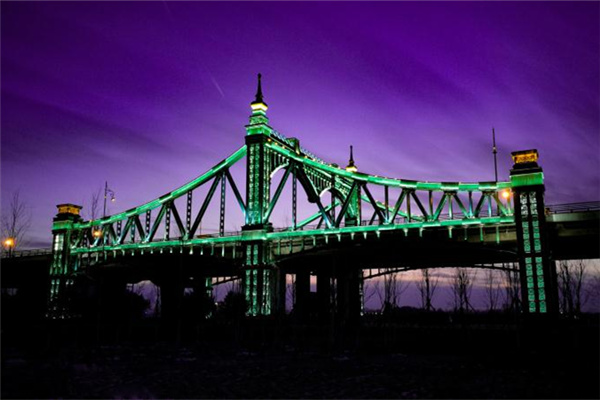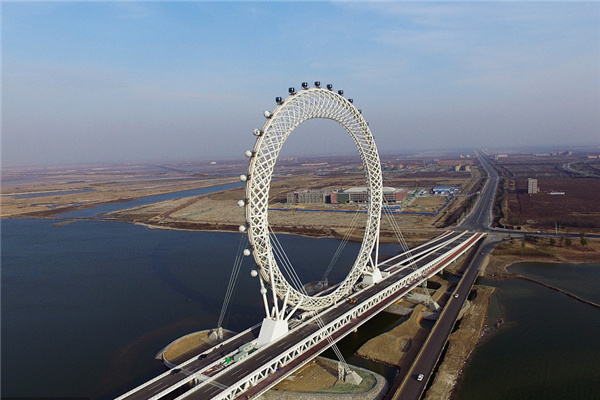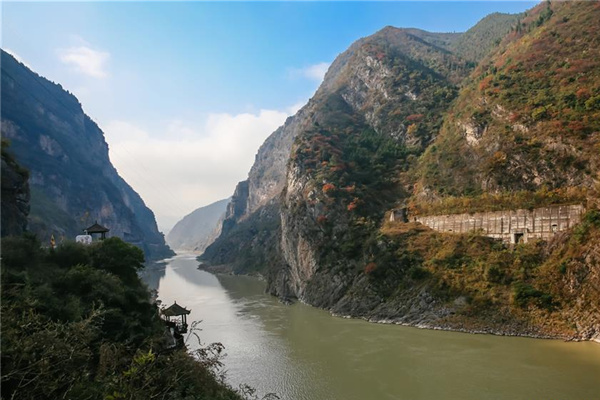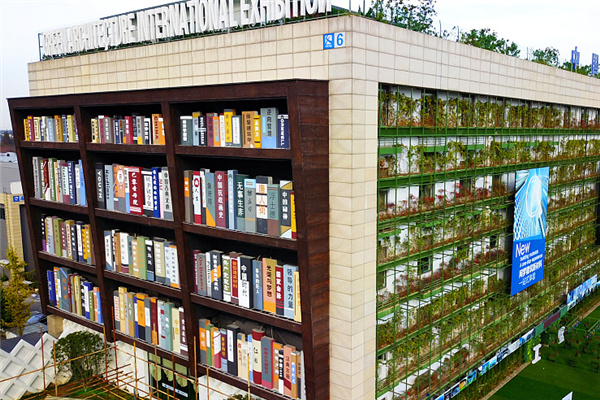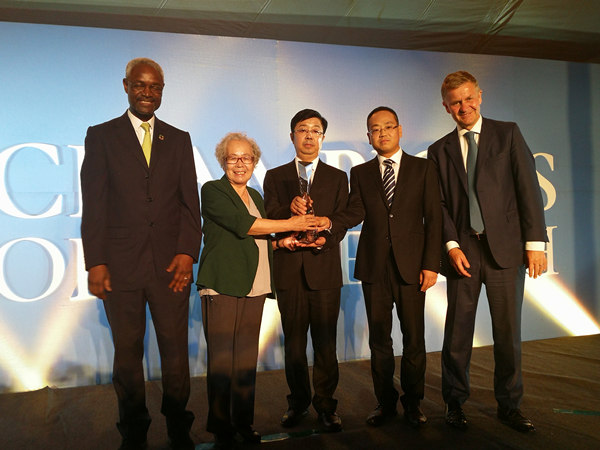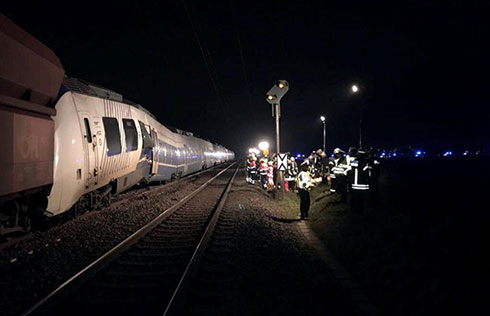

For developers of green buildings, effective use of energy and resources is a given.
But if you talk to the people at Mori Building Co Ltd of Japan, developer of the $1.1 billion Shanghai World Financial Center (SWFC), it's almost spiritual.
The 101-story skyscraper, soaring 492 meters into the city's skyline in the Lujiazui financial zone of Pudong New Area, will be one of the tallest office towers in the world when it's completed this spring. "We didn't build it (SWFC) for the bragging rights," says Michiho Kishi, a Mori deputy manager in Shanghai. "There is a practical reason for tall buildings in cities like Shanghai."
Efficient use of space is one reason.
|
Shanghai World Financial Center |
"Such a high-rise building will allow more space for greenery on the surface ground than if we build individual smaller structures," says Kishi. "That will change the sprawling faces of cities to make way for a better future."
That's the logic behind the "Vertical Garden City" concept, the creation of compact cities that integrate the land subdivided over previous decades and give way to high-rise structures opening up green space. This, according to Kishi, is especially significant for mega-cities like Tokyo and Shanghai, where rapid economic development draws ever-growing investment and demands more efficient use of land space.
Upon completion, the high-rise will add 2.4 million square feet of office space to the city's soaring real estate market, equivalent to about half the space added in the city last year, according to Fortune magazine. It is to cater to the needs of an ever-growing conglomeration of international financial institutions and companies seeking to expand in the heart of the city's commercial center.
Strained by the excessive demand for construction land, Shanghai and neighboring cities in the Yangtze River Delta are suffering from a shortage of land resources, according to a recent report by Hong Yinxing, director at the Research Center for the Social and Economic Development of the Yangtze River Delta, Nanjing University. The utilization rate of construction land in the delta reached a ratio of 17.4 percent as of the end of 2006; that figure was only 5.05 in the US and 14.4 in Great Britain. Shanghai alone has a ratio of 35.8 percent, higher than the national average.
"At a time when integrated use of land has become increasingly urgent with the overheated industrial development, high-rise structures can help save limited land space," says Che Xueya, general architect at Architectural Design and Research Institute of Tongji University. "It also demonstrates the strength of modern technological innovation."
High rises can not only relieve the city of strained land pressure, but also bring new ease, both spatially and temporally, to the urban living experience by placing business, residential, shopping and recreational facilities in close proximity, says Kishi. As a business, cultural and entertainment center, SWFC has the world's highest observation deck, a five-star hotel, luxury shopping malls, multi-functional conference facilities along with office space.
"In Tokyo, people working in the metropolitan area spend about 140 minutes per day commuting, which makes them quite exhausted," says Kishi. "High buildings, however, can help us construct mixed-use, compact cities in which people can find a way to relax, have more time for communication, business and cultural exchanges, which is the first step in achieving harmony between people and urban life."
Green measures
Although many complain that the city has been built with too many skyscrapers that could exert pressure on both the environment and quality of life, SWFC says environmental protection lies at the heart of its conception.
It will initiate a recycling project that covers all the tenants in the building. According to Kishi, the company will provide each tenant with a special container used to separate waste, and will see that the waste is duly recycled. The move is expected to raise the tenants' awareness of environmental protection although it will increase costs on the part of the company.
To lower electricity consumption, the building will use a VAV (Variable Air Volume) air-conditioning system for the first time in China. Each floor is equipped with four air-handling units allowing for 16 separate zones, so that tenants in different areas can adjust temperatures to different levels and minimize energy consumption.
It also uses energy-saving glasses with a vacuumed interlayer that is able to preserve the heat inside the building, so that air-conditioning can be kept to a minimum level.
The construction materials are free from substances like asbestos and formaldehyde that are harmful to the environment, Kishi adds.
Although construction on SWFC has taken a prolonged period of 10 years (construction began in 1997 and was suspended during the Asian Financial Crisis and resumed in 2003), the company holds high expectations for the project. It estimates the tower will be 40 percent occupied the day it opens and 90 percent full one year later.
Analysts' doubts
Analysts, however, have their doubts over high-rise structures.
"Apart from safety concerns in a highly concentrated area, there looms potential hazards such as light and air pollution," says Che. "Tall buildings rely heavily on glass to cover its surface, which increases the possibility of light refraction and may bring discomfort to people in the nearby community. We have received many such complaints over the past few years.
"With more equipment at work and consuming more energy, tall buildings also have a higher discharge volume of waste gases," Che adds.
Her views are echoed by Xu Qiang, an engineer at Shanghai Research Institute of Building Sciences.
"High buildings may command higher consumption of energy in certain areas, like the electricity used for lift transportation," says Xu, although he was quick to add that consistent technological innovation will bring down costs.
Commenting on the green building industry, Xu says it is worth the money to invest in green technologies. "It's certainly gratifying to see that more and more buildings are taking on a 'green' look in China," says Xu. "Although construction costs are 10 to 20 percent higher, they can save energy and exert less pressure on the environment in the long run."
Since China, like many other countries around the world, suffers from increasing environmental hazards, the concept of green buildings needs to be promoted, Xu adds.
(China Daily 03/17/2008 page5)
